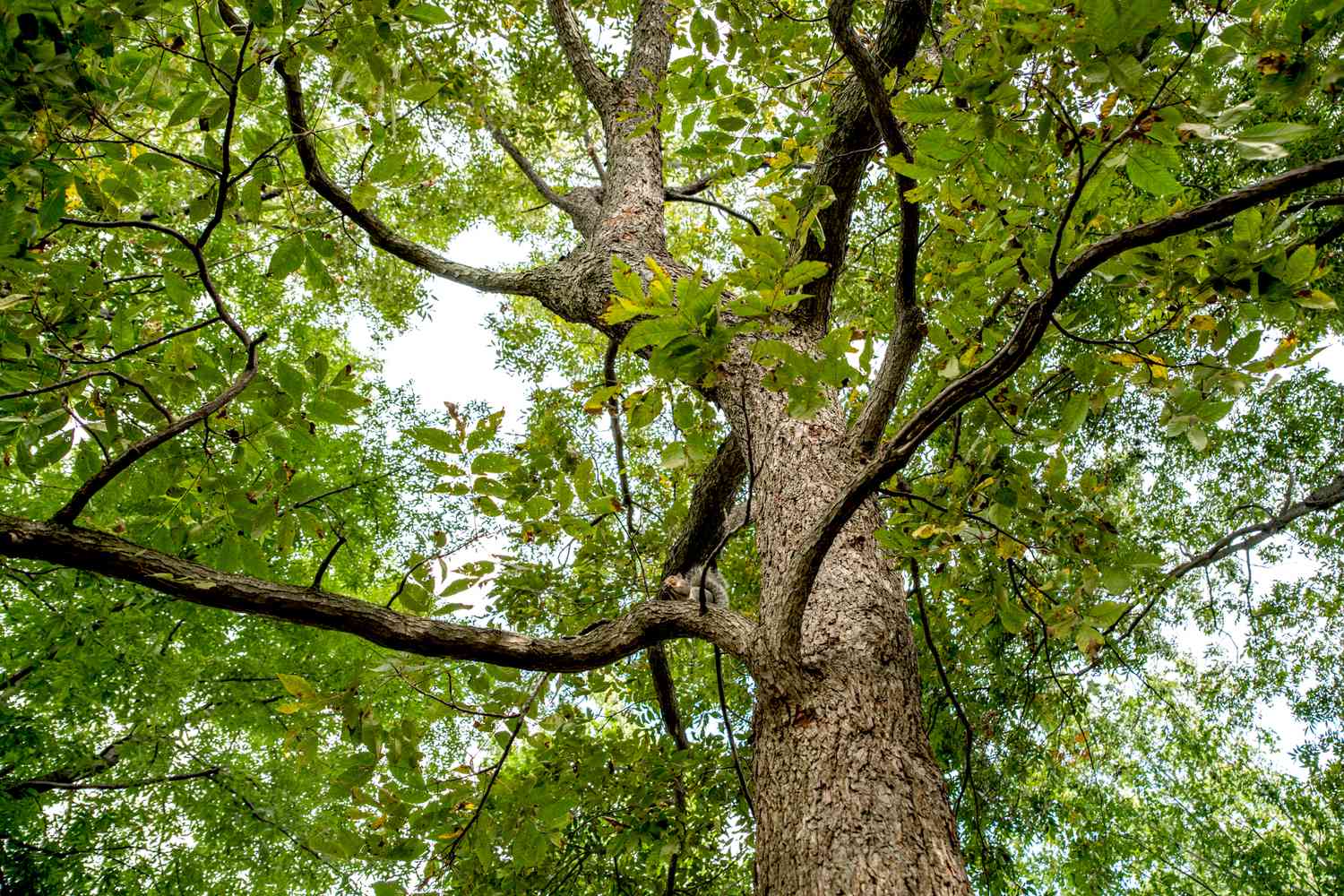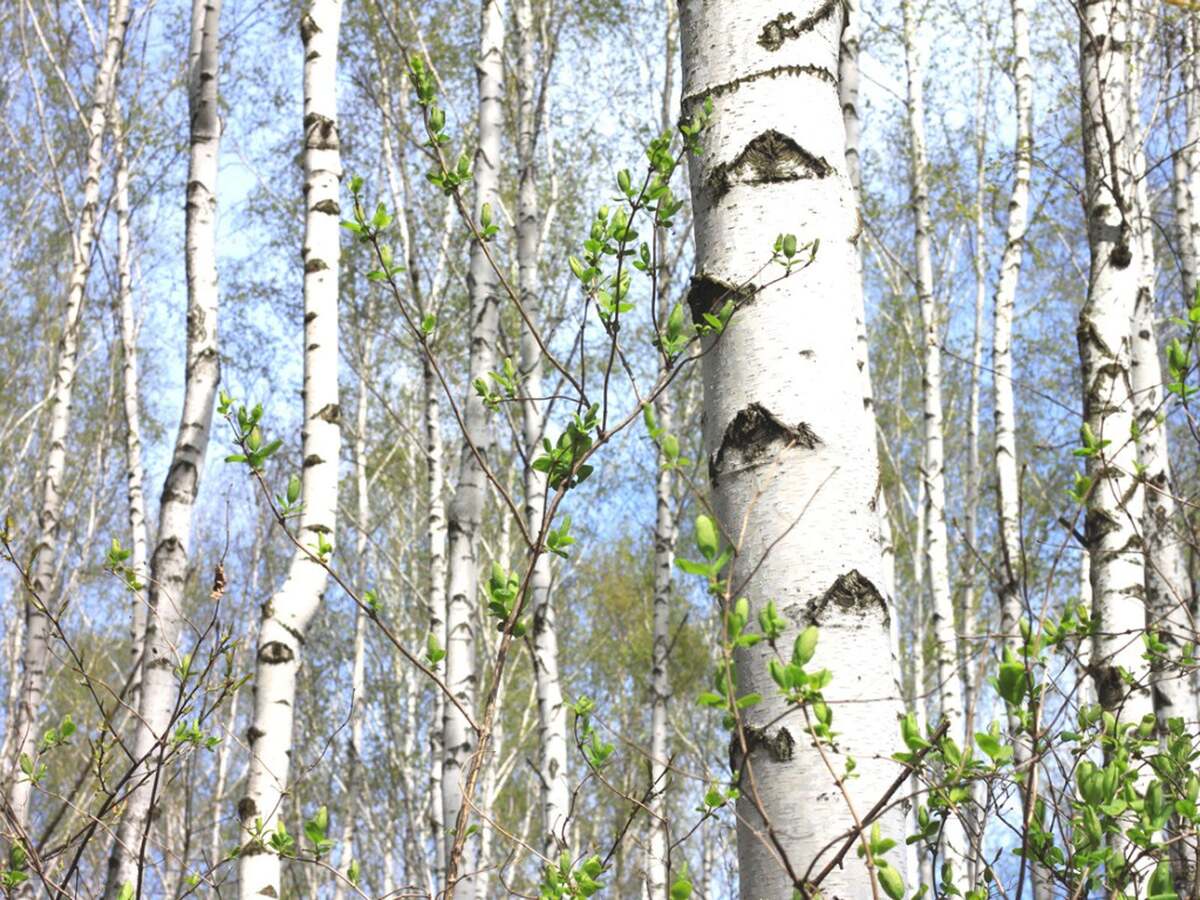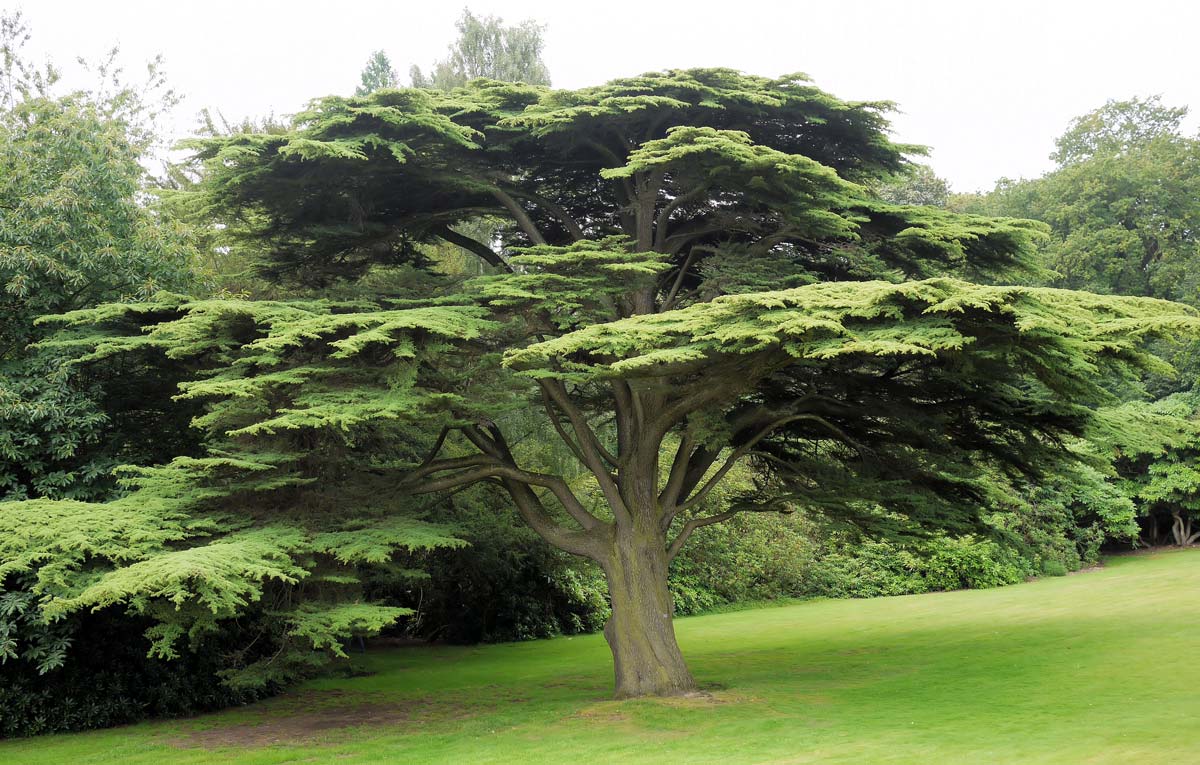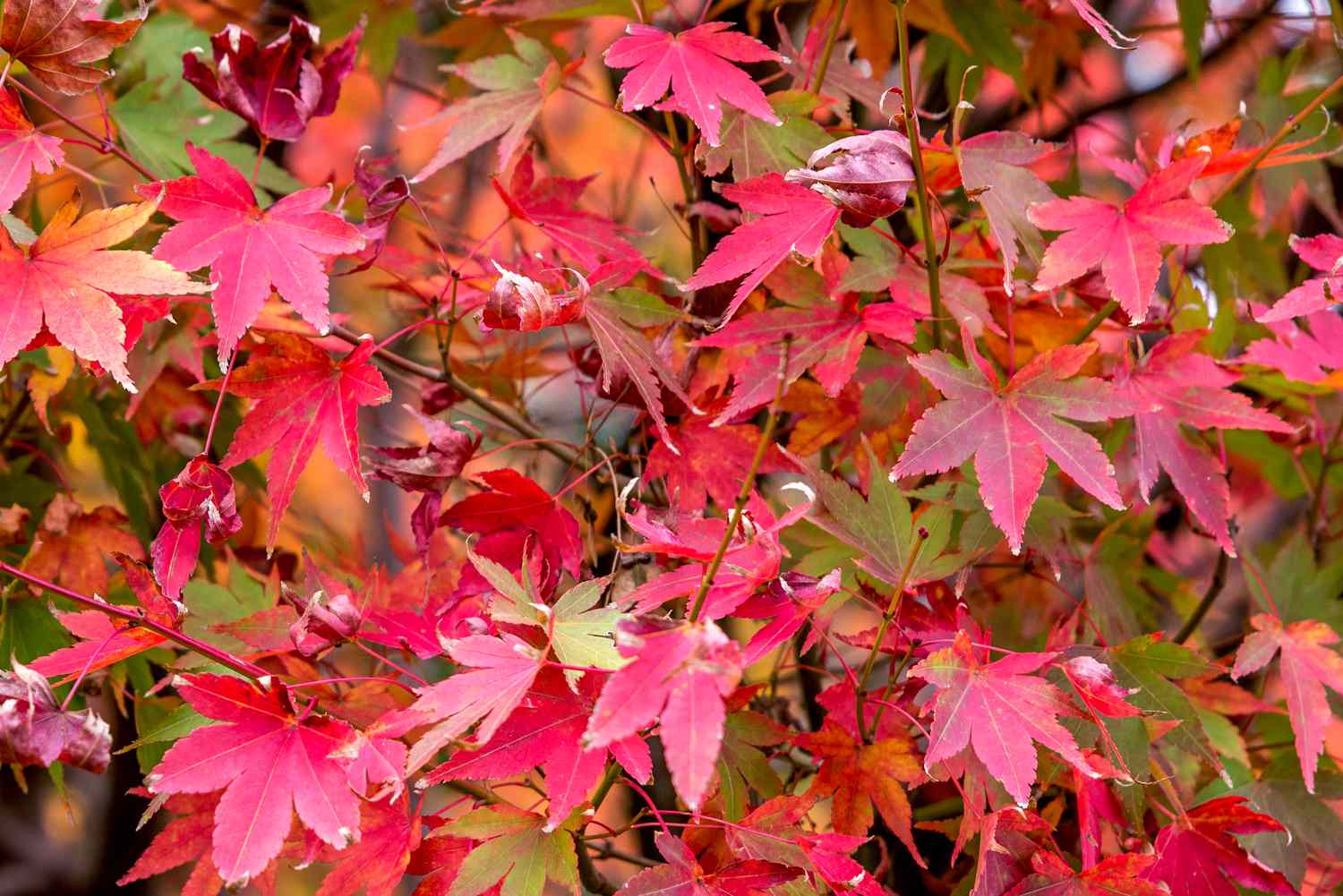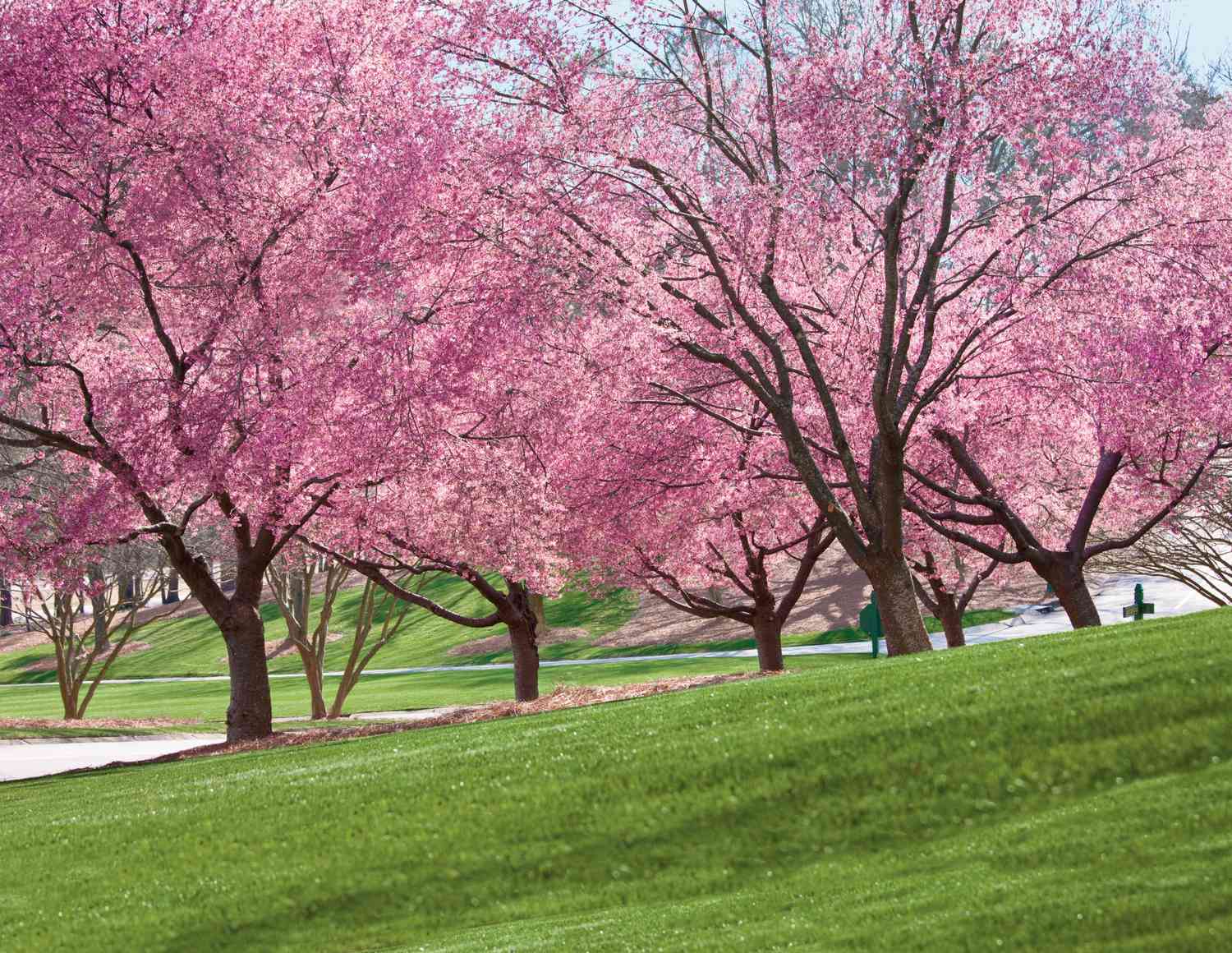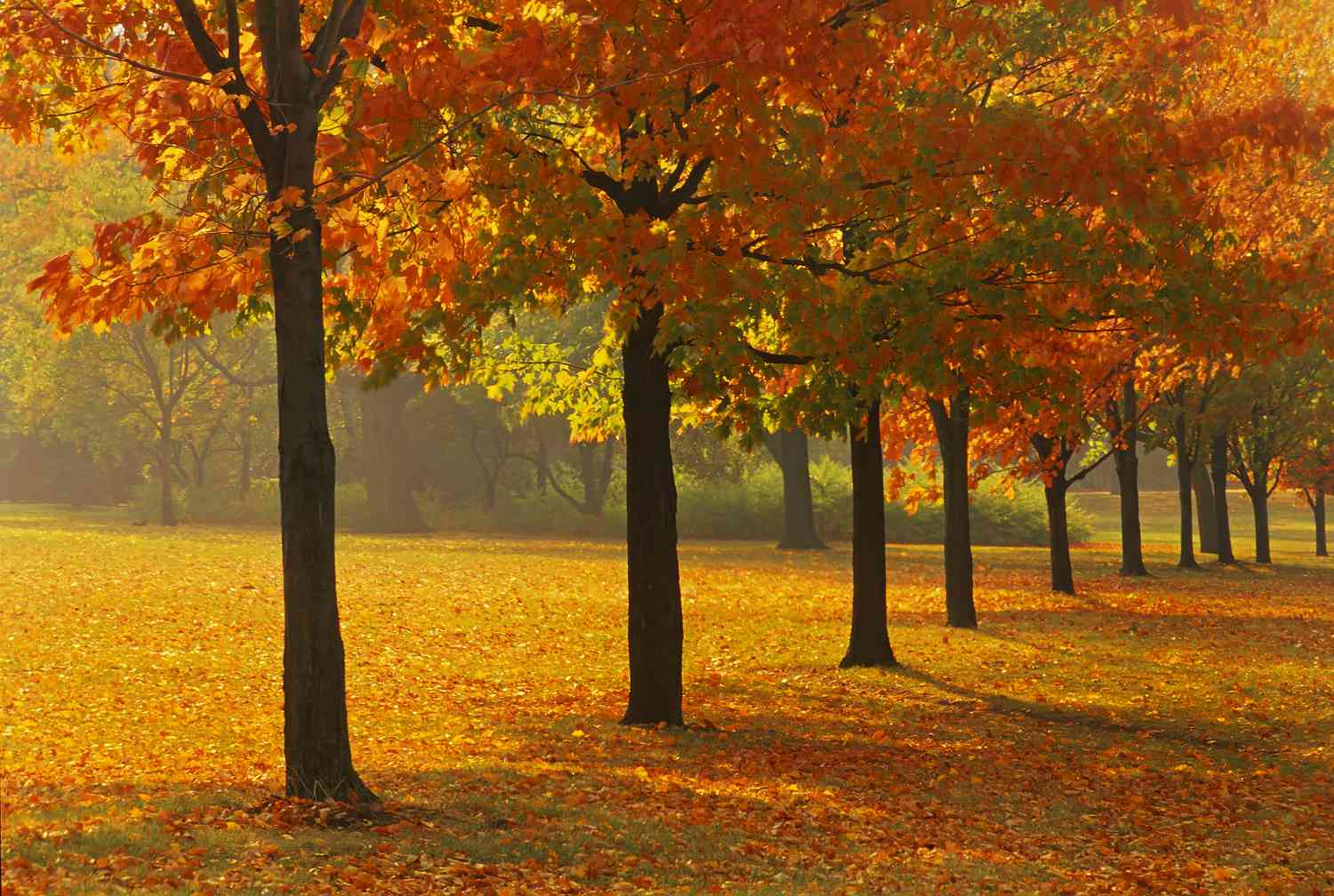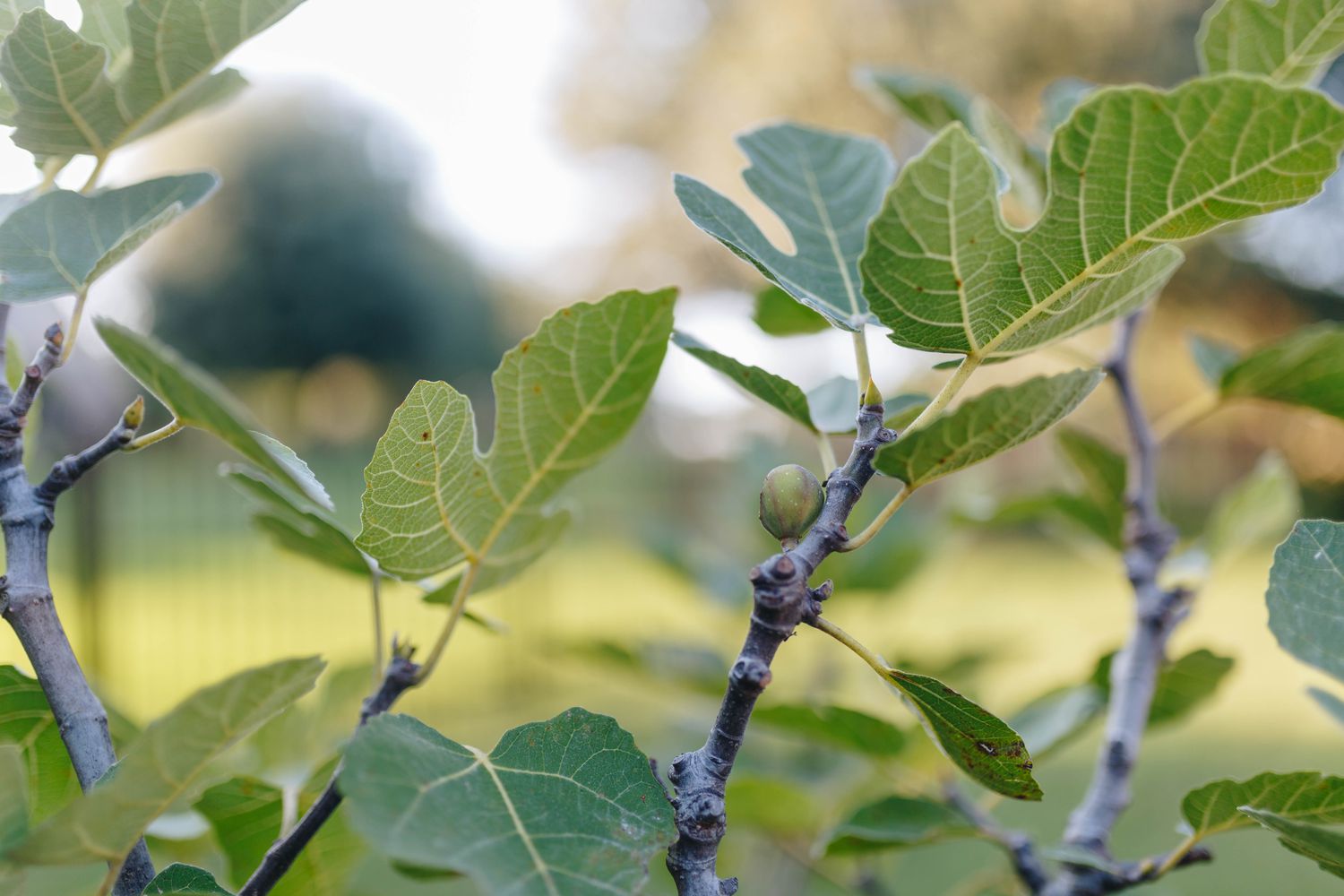Home>Gardening Techniques>Plant Care>How Tall Do Maple Trees Get
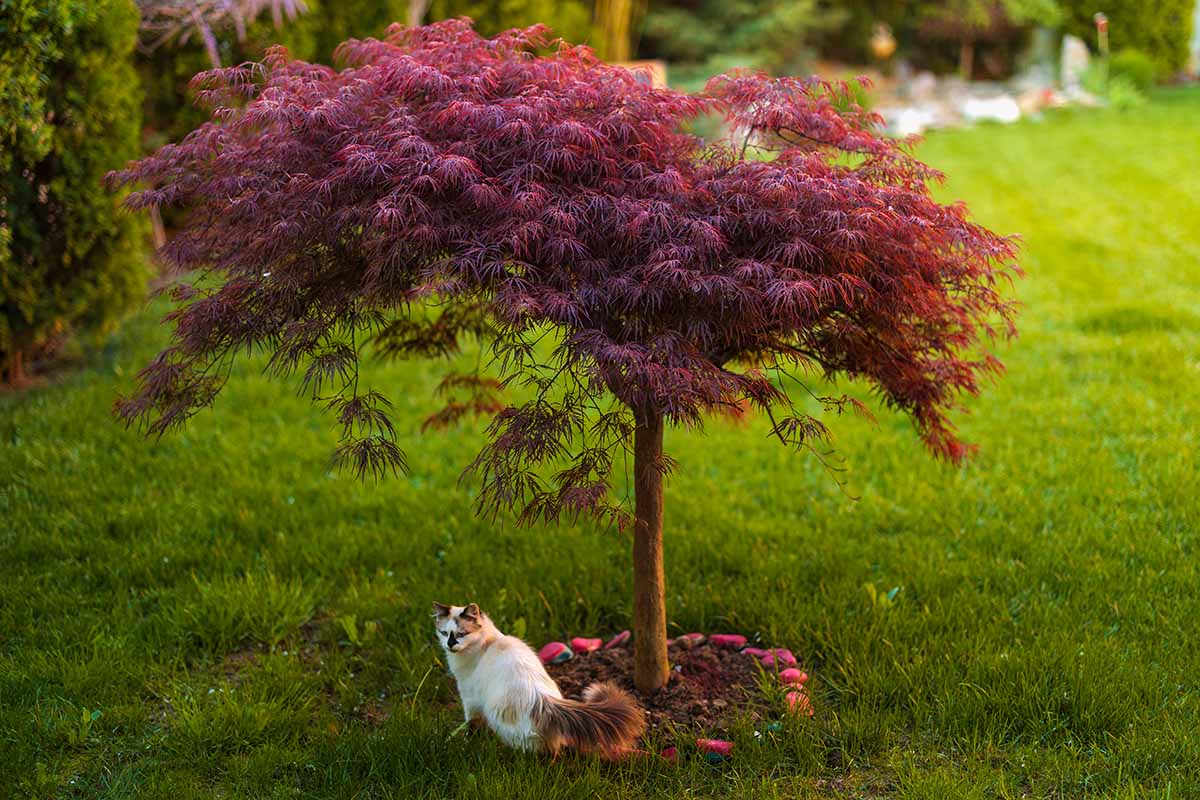

Plant Care
How Tall Do Maple Trees Get
Modified: February 8, 2024
Discover the optimal plant care for maple trees and learn about their impressive height potential.
(Many of the links in this article redirect to a specific reviewed product. Your purchase of these products through affiliate links helps to generate commission for Chicagolandgardening.com, at no extra cost. Learn more)
Table of Contents
Introduction
Welcome to the world of maple trees! These majestic trees, known for their stunning foliage and sweet sap, are a popular choice among gardeners and nature enthusiasts. Whether you’re a homeowner looking to add beauty to your landscape or a professional arborist looking to expand your knowledge, understanding the height potential of maple trees is essential.
Maple trees (genus Acer) are native to various regions around the world, including North America, Europe, and Asia. They are known for their distinct leaves, which typically have lobed or palmate shapes and vibrant colors ranging from deep reds to brilliant oranges and yellows. Maple trees are also prized for their remarkable growth patterns and ability to reach impressive heights.
As you explore the world of maple trees, it’s important to understand the factors that influence their height. From species differences to environmental conditions, several factors come into play. Additionally, learning about the average height of different maple tree species and exceptional examples can provide valuable insights into their growth potential.
Understanding the importance of maple tree heights goes beyond mere curiosity. It can assist in various aspects of tree management, including planting decisions, pruning practices, and overall care. By understanding the factors that limit their growth and implementing effective management strategies, you can help your maple trees thrive and reach their full height potential.
This article will delve into the world of maple tree heights, discussing the characteristics of maple trees, the factors affecting their growth, the average heights of different species, and the significance of exceptional maple trees. We will also explore the factors that limit their growth and provide valuable tips for managing and caring for your maple trees. So, let’s embark on this journey to discover the incredible heights that maple trees can achieve!
Characteristics of Maple Trees
Maple trees are renowned for their unique characteristics, which set them apart from other tree species. Understanding these distinct traits can help you identify maple trees and appreciate their beauty. Here are some key characteristics of maple trees:
- Leaves: One of the most distinctive features of maple trees is their leaves. They typically have a palmate or lobed shape, with three to seven pointed lobes radiating from a central point. The leaves can vary in size and color, displaying shades of green, red, orange, and yellow.
- Bark: Maple tree bark is smooth when young, often featuring a silver-gray color. As the tree matures, the bark may develop furrows or ridges, giving it a more textured appearance. Some species, like the paperbark maple (Acer griseum), have bark that peels off in thin strips, creating an attractive visual effect.
- Flowers: Maple trees produce small, inconspicuous flowers that typically appear in spring. These flowers are usually green or yellowish in color and grow in clusters called “racemes” or “umbels.” While the individual flowers may not be showy, they play a vital role in pollination and the tree’s reproduction process.
- Fruit: One of the most iconic features of maple trees is their winged fruits, called samaras or “helicopters.” These fruits have a double-winged structure that enables them to spin and glide in the wind, aiding in the dispersal of seeds. The samaras often change color as they mature, ranging from green to brown or red.
- Size: Maple trees are known for their impressive size. While the height can vary depending on the species and growth conditions, mature maple trees typically range from 30 to 100 feet tall. Some exceptional specimens can even exceed these heights, reaching over 150 feet in rare cases.
- Longevity: Maple trees have a relatively long lifespan, with some species living for several decades or even centuries. Well-maintained maple trees can provide beauty and shade for generations to come.
- Sap: Certain maple tree species, such as the sugar maple (Acer saccharum) and black maple (Acer nigrum), produce sap that can be tapped and boiled down to make maple syrup.
These unique characteristics contribute to the allure of maple trees and make them a beloved tree choice for landscapes, public parks, and forests. Understanding these traits can help you identify and appreciate maple trees, as well as cultivate them successfully in your own garden.
Factors Affecting Maple Tree Height
Several factors influence the height that maple trees can achieve. Understanding these factors is crucial for effective tree management and care. Here are some key factors that affect maple tree height:
- Species: Different maple tree species have varying growth characteristics and potential heights. Some species, like the silver maple (Acer saccharinum), tend to grow rapidly and can reach impressive heights. Others, such as the Japanese maple (Acer palmatum), have smaller, more compact growth habits.
- Genetics: The genetics of a maple tree play a significant role in determining its height potential. Trees with superior genetic traits have a higher likelihood of growing taller and healthier. When selecting maple trees for planting, it is important to consider the genetic quality of the tree to ensure optimal growth.
- Environmental Conditions: The environment in which a maple tree grows has a profound impact on its height. Factors such as sunlight, temperature, soil quality, and moisture availability all play crucial roles in tree growth. Maple trees thrive in well-drained soil with a pH level of around 6 to 7 and perform best in areas with moderate temperatures and ample sunlight.
- Competition: The presence of other plants, including trees and shrubs, can affect the height of maple trees. Intense competition for sunlight, water, and nutrients may restrict the growth of maple trees, resulting in stunted height. Proper spacing and regular thinning of surrounding vegetation can help alleviate competition and promote optimal growth.
- Pruning and Training: Pruning plays a crucial role in shaping the height and overall form of maple trees. Regular pruning helps to maintain a healthy structure, remove any dead or diseased branches, and direct growth in a desired direction. Proper training of young maple trees can contribute to better height development and overall tree health.
- Pest and Disease Management: The presence of pests and diseases can negatively impact the growth and health of maple trees. Insect infestations, such as aphids or borers, can weaken the tree and limit its height potential. Fungal infections, such as verticillium wilt or anthracnose, can also affect tree health and growth. Implementing appropriate pest and disease management practices can help minimize these risks and promote optimal growth.
By considering and addressing these factors, you can maximize the height potential of your maple trees. Providing a suitable environment, proper care, and regular monitoring can contribute to healthy growth and impressive heights for your maple trees.
Average Height of Different Maple Tree Species
Maple trees encompass a diverse array of species, each with its own unique growth characteristics, including height. While individual tree heights can vary within a species, it is helpful to have a general understanding of the average heights for different maple tree species. Here are the average height ranges for a few common maple tree species:
- Sugar Maple (Acer saccharum): The sugar maple, famous for its vibrant fall foliage and delicious maple syrup, can reach an average height of 60 to 75 feet. In exceptional cases, some sugar maples have been known to surpass 100 feet in height.
- Red Maple (Acer rubrum): Known for its brilliant red foliage in the fall, the red maple can grow to an average height of 40 to 60 feet. Its adaptable nature and attractive form make it a popular choice for landscaping.
- Silver Maple (Acer saccharinum): The silver maple is recognized for its rapid growth and expansive canopy. It can attain an average height of 50 to 80 feet, making it one of the tallest maple tree species.
- Japanese Maple (Acer palmatum): Unlike other maple species, the Japanese maple is known for its small size and delicate appearance. It typically grows to a height of 10 to 25 feet, making it an excellent choice for compact gardens and ornamental landscaping.
- Norway Maple (Acer platanoides): The Norway maple is a sturdy and robust tree that can reach an average height of 40 to 60 feet. It is often used as a shade tree in urban areas due to its tolerance of various soil and environmental conditions.
- Bigleaf Maple (Acer macrophyllum): Native to the western regions of North America, the bigleaf maple is characterized by its large, lobed leaves and impressive size. It can grow to an average height of 50 to 80 feet, with some specimens exceeding 100 feet.
It is important to note that these average height ranges serve as general guidelines. Individual tree height can be influenced by factors such as genetics, environmental conditions, and proper tree care. Additionally, there may be variations within a species due to factors like regional differences or specific growing conditions.
Understanding the average height of different maple tree species can help you make informed decisions when selecting trees for your landscape or planning for their growth. It is essential to consider the space available, desired aesthetic, and overall function of the tree when choosing the right maple species for your specific needs.
Exceptional Maple Trees: Record-breaking Heights
While the average height ranges for maple tree species provide a general idea of their growth potential, there are exceptional specimens that have surpassed these averages and attained record-breaking heights. These remarkable maple trees serve as testaments to the species’ growth potential and the optimal conditions in which they can thrive. Here are some examples of exceptional maple trees known for their record-breaking heights:
- The Doerner Fir: Found in Canada, the Doerner Fir, a subalpine fir (Abies lasiocarpa), holds the Guinness World Record for the world’s tallest fir tree. Standing at a staggering 327 feet, this exceptional tree showcases the incredible height potential of certain coniferous trees, including maple trees.
- The Lindsey Creek Maple: Located in Oregon, USA, the Lindsey Creek Maple (Acer macrophyllum) holds the world record for the tallest broadleaf tree, standing at 217 feet. This extraordinary specimen showcases the impressive height that bigleaf maple trees can achieve in suitable growing conditions.
- The Hohenadel’s Acer palmatum: This exceptional Japanese maple (Acer palmatum) located in Pennsylvania, USA, stands at a towering height of 29 feet. It is recognized as the tallest Japanese maple tree in North America, showcasing the growth potential of this beloved ornamental tree species.
- The Lady Clementine Maple: Another notable example is the Lady Clementine Maple (Acer x Freemanii) located in Pennsylvania, USA. This hybrid maple tree stands at an impressive height of 105 feet, exemplifying the growth potential of crossbred maple varieties.
- The Pride of Rogue River: This exceptional bigleaf maple (Acer macrophyllum) located in Oregon, USA, holds the record for the largest broadleaf tree by wood volume. With a diameter of 13.8 feet and a height of 119 feet, this tree highlights the massive size that certain maple species can achieve under ideal conditions.
These exceptional maple trees demonstrate the extraordinary heights that can be reached when the right combination of genetics, environmental conditions, and care align. While not every maple tree will reach these record-breaking heights, they serve as awe-inspiring examples of the potential growth that these magnificent trees can achieve.
Exploring these exceptional maple trees can inspire a greater appreciation for the beauty and grandeur of these species. They remind us of the remarkable heights that nature can reach and encourage us to nurture and protect our own maple trees for future generations to enjoy.
Importance of Maple Tree Heights
The height of maple trees holds significant importance in various aspects of tree management, ecological balance, and aesthetic value. Understanding the importance of maple tree heights can help guide decisions regarding tree care, landscaping, and environmental conservation. Here are some key reasons why maple tree heights are significant:
- Shade and Cooling: Taller maple trees provide ample shade, creating cool and comfortable microclimates beneath their canopy. This is particularly important in urban areas, where tall trees can help mitigate the effects of heat islands and reduce energy consumption by providing natural cooling to buildings and outdoor spaces.
- Visual Impact and Aesthetics: The height of maple trees contributes to their visual impact and aesthetic appeal. Tall trees create a sense of grandeur and majesty, enhancing the beauty of landscapes, parks, and gardens. In fall, their towering canopies showcase a stunning display of vibrant colors, captivating the eyes of onlookers.
- Wildlife Habitat: Maple trees provide essential habitat for a diverse range of wildlife. Taller trees offer nesting sites for birds, shelter for mammals, and a refuge for insects. The leafy canopies also support a variety of insects, which serve as a vital food source for birds and other animals.
- Carbon Sequestration: Larger and taller trees have a greater capacity to capture and store carbon dioxide, a greenhouse gas that contributes to climate change. Maple trees, with their significant height potential, play an important role in mitigating climate change by sequestering carbon and helping to reduce atmospheric CO2 levels.
- Soil Erosion Prevention: The extensive root systems of tall maple trees help stabilize soil and prevent erosion. Their roots bind the soil, reducing the risk of landslides and protecting water sources from sedimentation. This is particularly crucial in areas prone to heavy rainfall or steep slopes.
- Cultural Significance: Maple trees have cultural significance in many regions around the world. They are often revered as symbols of strength, longevity, and wisdom. The majestic height of maple trees adds to their symbolic importance and the emotional connection people have with these iconic trees.
- Environmental Education: The height of maple trees lends itself to educational opportunities. Through studying their growth patterns and ecosystem interactions, educators can teach valuable lessons about biology, ecology, and environmental stewardship. Tall trees also serve as landmarks for educational nature walks and guided tours.
The importance of maple tree heights extends beyond their physical attributes. They contribute to the well-being of ecosystems, enhance the beauty of our surroundings, and provide numerous environmental and cultural benefits. Recognizing and appreciating these aspects can foster a deeper understanding of the value and significance of maple trees in our lives.
Factors Limiting Maple Tree Growth
While maple trees have the potential to reach impressive heights, several factors can limit their growth and prevent them from reaching their full height potential. Understanding these limiting factors is essential for effective tree management and ensuring the health and vitality of maple trees. Here are some key factors that can restrict maple tree growth:
- Environmental Conditions: The environment plays a significant role in determining maple tree growth. Extreme temperatures, prolonged drought, or excessive moisture can stress trees and impede their growth. Similarly, poor soil conditions, such as compacted or nutrient-deficient soil, can limit the availability of essential nutrients and hinder tree growth.
- Competition for Resources: Maple trees require adequate access to sunlight, water, and nutrients for optimal growth. Intense competition from surrounding vegetation, including other trees, shrubs, or invasive plants, can limit the availability of these resources. This can result in stunted growth and reduced height potential.
- Pests and Diseases: Maple trees can be susceptible to various pests and diseases that can impact their growth. Insect infestations, such as aphids or borers, can weaken trees and restrict their growth. Fungal infections, like verticillium wilt or anthracnose, can also affect tree health and limit height development. Regular monitoring and appropriate management strategies are vital to mitigate these risks.
- Improper Pruning: Improper pruning practices, such as excessive or incorrect pruning cuts, can negatively impact tree growth. Removing too many branches or improperly pruning the central leader can lead to an unbalanced form and stunted growth. Pruning should be done sparingly and following best practices to promote healthy growth and maintain optimal tree structure.
- Genetic Factors: The genetic makeup of a maple tree can influence its growth potential. Some trees may have genetic limitations that result in slower growth or shorter stature. Understanding the genetic traits and selecting trees with superior growth potential can help overcome these limitations and promote optimal height development.
- Presence of Construction and Urbanization: Maple trees located in urban areas or near construction sites may face challenges that limit their growth. Soil compaction, changes in water availability, and damage to roots or trunk from construction activities can all hinder tree growth. Implementing proper tree protection measures during construction and providing ongoing care can help mitigate these limitations.
Addressing these limiting factors is crucial for promoting healthy growth and maximizing the height potential of maple trees. Providing optimal environmental conditions, reducing competition for resources, implementing effective pest and disease management strategies, and practicing proper pruning techniques are essential for overcoming these limitations. Regular monitoring and proactive care are essential for identifying and addressing potential growth restrictions to ensure the long-term health and vitality of maple trees.
Management and Care for Maple Trees
Proper management and care are vital for maintaining the health, vitality, and optimal growth of maple trees. By implementing effective practices, you can promote healthy growth, enhance the aesthetic appeal of your landscape, and ensure the longevity of these magnificent trees. Here are some essential tips for managing and caring for maple trees:
- Planting Location: Choose a suitable planting location that provides adequate sunlight, well-drained soil, and ample space for the tree to grow. Consider the mature size of the maple tree species when planning its placement to avoid overcrowding or interference with utility lines or structures.
- Soil Preparation and Fertilization: Prior to planting, ensure the soil is well-prepared by loosening it and improving drainage if necessary. Adding organic matter can help enrich the soil and provide essential nutrients. Regularly fertilize the tree with a balanced, slow-release fertilizer to support healthy growth.
- Watering: Provide regular watering, particularly during dry spells or in the early stages of growth. Deep, infrequent watering is preferred over frequent shallow watering, as it encourages the tree’s roots to grow deeper into the soil. Be mindful not to overwater, as excessive moisture can lead to root rot or other diseases.
- Pruning: Prune maple trees during their dormant season to shape their structure, remove dead or diseased branches, and improve air circulation. Avoid excessive pruning, as it can hinder growth. Proper training of young maple trees can guide their growth and help develop a desired form.
- Pest and Disease Management: Regularly monitor maple trees for signs of pests or diseases. Implement appropriate integrated pest management techniques, such as using insecticidal soaps or biological controls, to mitigate pest issues. Proper sanitation and cultural practices, like removing fallen leaves and debris, can help prevent the spread of diseases.
- Mulching: Apply a layer of organic mulch around the base of the tree, leaving a gap around the trunk. Mulch helps retain soil moisture, regulate soil temperature, suppress weed growth, and provide essential nutrients as it decomposes. Avoid piling mulch against the trunk, as it can lead to moisture retention and bark rot.
- Regular Inspections: Conduct regular inspections to check for signs of stress, damage, or disease. Look for issues such as cracks in the bark, unusual leaf discoloration, pest infestations, or signs of decay. Early detection allows for timely intervention and prevents further damage to the tree.
- Professional Arborist Services: If you feel uncertain or lack the necessary expertise, consider consulting a professional arborist for tree care. They can provide assessments, recommendations, and necessary treatments to ensure the health and longevity of your maple trees.
By following these management and care practices, you can create optimal conditions for maple trees to thrive. Healthy and well-maintained maple trees will reward you with their beauty, shade, and environmental contributions for years to come.
Conclusion
Maple trees are captivating and magnificent beings that add beauty, shade, and environmental benefits to our surroundings. Understanding their growth potential and implementing effective management and care practices are essential in ensuring their health, vitality, and optimal growth. From the characteristics and average heights of different maple tree species to the factors that influence their growth, we have explored various aspects of maple tree heights.
We have learned that factors such as species, genetics, environmental conditions, competition, pruning, pests, and diseases can all impact the height that maple trees can achieve. Additionally, we have discovered exceptional maple trees with record-breaking heights that inspire wonder and awe.
The importance of maple tree heights transcends their physical attributes. Taller maple trees provide shade, enhance aesthetics, offer habitat for wildlife, sequester carbon, prevent soil erosion, and have cultural significance. Furthermore, understanding the factors that limit maple tree growth and implementing proper management and care techniques can help overcome these limitations and ensure the long-term health and vitality of maple trees.
By considering the tips for planting, soil preparation, watering, pruning, pest management, mulching, and regular inspections, you can foster healthy growth and maintain the longevity of maple trees. If needed, professional arborist services can provide valuable guidance and expertise.
In conclusion, maple trees stand as iconic symbols of strength, beauty, and resilience. By appreciating their height potential and ensuring their proper management and care, we can continue to enjoy the many benefits they bring to our landscapes, ecosystems, and communities for generations to come.
